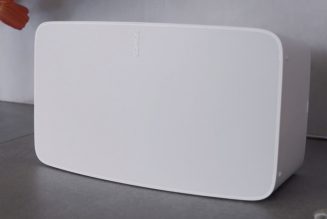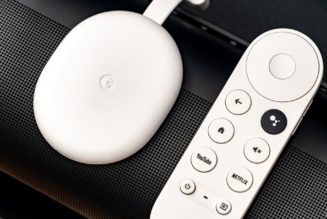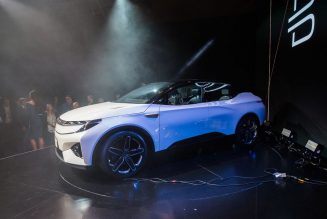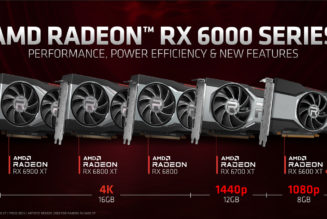Google just wrapped up its fall hardware event where it debuted the Pixel 5, the less expensive Pixel 4A 5G, the oft-rumored Chromecast with Google TV software built in, as well as the Nest Audio smart speaker. It’s a lot of good news for people who like new hardware. All said, the quick half-hour event contained mostly announcements we expected, but there were a few unexpected surprises. Here’s everything you might have missed at Google’s event.
In the case of specs, the Pixel 5 isn’t trying to go up against the most powerful phones in the world. Instead of beating them when it comes to raw speed (it has a midrange Snapdragon 765G processor, but the 8GB of RAM should deliver some snappiness), Google is focused on delivering some unique features along with — for the first time — 5G support.
For one, it has a 90Hz refresh rate FHD display, which will make every little animation appear to run smoother. It’s also rated IPX8, so it’s both waterproof and dustproof. Google also says its camera is still amazing, and this new phone has an ultrawide lens. In terms of camera software, it will have Night Sight working in portrait mode, a mode that lets you adjust the lighting in post-processing, and — finally — Google seems to be making some improvements to video recording. The phone costs $699, and it will be released on October 15th in two colors: green or black.
:no_upscale()/cdn.vox-cdn.com/uploads/chorus_asset/file/21924764/lcimg_ccaced6f_7977_4517_bbf2_1d04ea742185.jpg)
The second phone Google debuted today is a Pixel 4A with 5G support. It’s more than just the same phone with a new feature, though. For people who wished Google had released a Pixel 4A XL, this is essentially that phone. It has a 6.2-inch OLED screen (the 4A has a 5.8-inch OLED). It shares the same Snapdragon 765G processor found in the Pixel 5 (a step up from the 730G in the smaller 4A), though it lacks a fast-refreshing display or waterproofing of any kind. This model costs $499, making it one of the more affordable 5G phones on the market. It’s going to be available in black or white, and it will launch in November in most countries.
Google is adding group watch to Duo video chats
In Google Duo, you’ll soon be able to screen share with whoever you’re chatting with. As Duo’s functionality stands today, you’re simply able to chat with the front- or rear-facing cameras, so sharing a screen seems great if you want to watch a movie together, or help walk your family or friends through some tricky steps in an app or game.
:no_upscale()/cdn.vox-cdn.com/uploads/chorus_asset/file/21924713/DSCF2108.jpg)
Google’s new Chromecast is different from previous models in a few ways: it doesn’t require a phone to play content (though you can still cast from your devices), it includes a dedicated remote in the box with its own Assistant button, and has YouTube and Netflix quick launch buttons. It runs on its own OS called Google TV. Google has priced this new model at $50, which is great for a device that supports 4K HDR and a fleet of streaming apps. The Chromecast will come in three colors: snow (white), sky (blue) and sunrise (salmon pink)
:no_upscale()/cdn.vox-cdn.com/uploads/chorus_asset/file/15972614/stadia_controller.jpg)
You’d think Google would have given Stadia some stage time at its event. Alas, Stadia cloud gaming isn’t officially supported at launch (a shame!). But it will come at some point. That certainty comes from the fact that we actually got our hands on one of these Chromecasts already because they were available to purchase at Home Depot. And with a little fiddling, we got Stadia running on it.
:no_upscale()/cdn.vox-cdn.com/uploads/chorus_asset/file/21924597/screencapShows.png)
As part of the announcement of the new Chromecast running Google TV software, the company’s own Google Play Movies & TV app will be merged into a app called — you guessed it — Google TV. Expect this change to occur on Android phones first. Like the app that’s being phased out, you’ll be able to rent or purchase movies with Google TV. If you sync your other streaming services to the app, Google TV can pull titles from each service into genres to make it easier to find something to watch. Google says this Google TV software will make its way to some devices currently running Google TV.
:no_upscale()/cdn.vox-cdn.com/uploads/chorus_asset/file/21924721/lcimg_4f4cdf11_5b22_406c_8224_5800fada1a01.jpg)
Google’s latest smart speaker is called the Nest Audio, and it looks like the byproduct of the original Google Home and the Home Max merged into one. It’s covered all over with Google’s almost-signature mesh fabric used in previous speaker models. There’s not much we can say about this one without trying it out, but Google says it should be a powerful speaker.
According to my colleague Dan Seifert’s post, “Google claims the Nest Audio is 75 percent louder than the Google Home it replaces, and has 50 percent stronger bass response. Its enclosure is made from 70 percent recycled plastic.”









